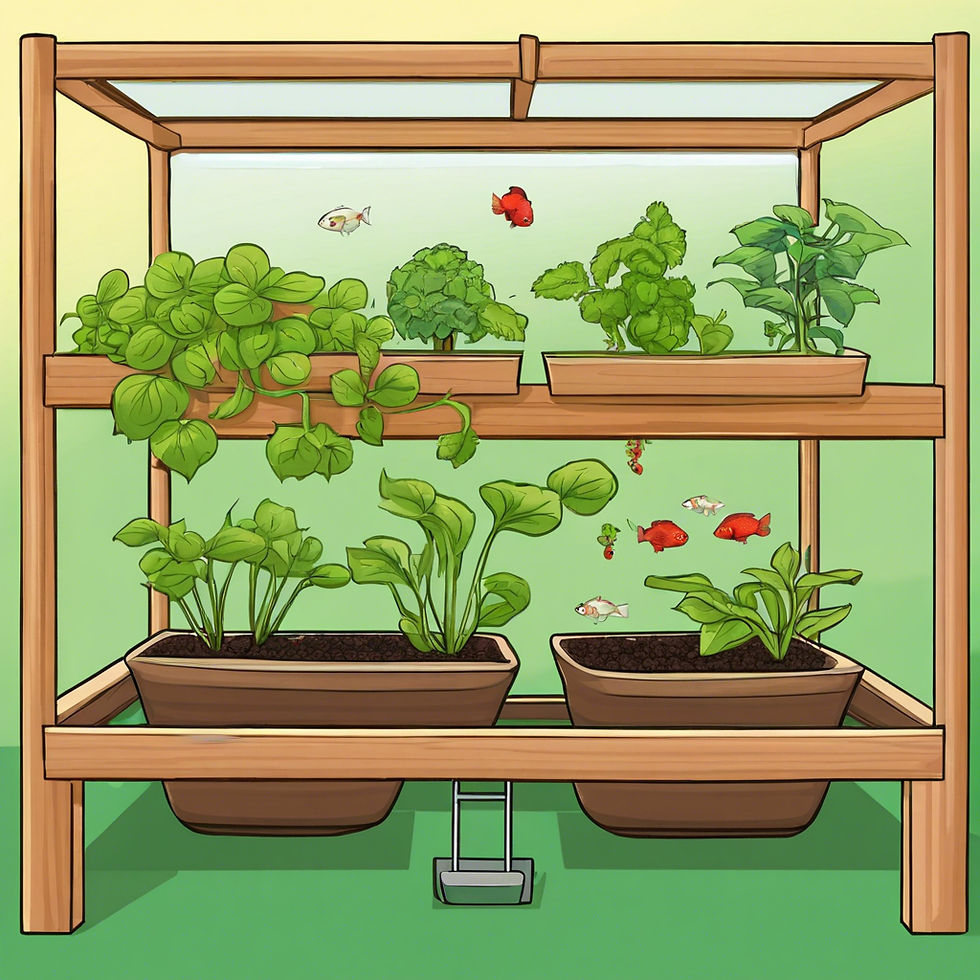Aquaponics: Getting Started
- LandZero

- Aug 26, 2022
- 3 min read
Updated: Oct 12, 2024
As the global population continues to grow rapidly, the need and demand for food sources also increases. Sadly, with the alarming decline in fertile land areas, aquaponics has become a potential solution. Aquaponics refers to growing vegetables and fish in soil-free and integrated systems.
Fish are fed in these systems and bacteria break down their wastes. These are then used for feeding the plants. The plants then clean the water that gets re-circulated around the system. Overall it's creating a mutually beneficial environment and providing vegetables and fish for food.

Aquaponics – How Does It Work?
In a typical fish tank, wastes accumulate and water turns toxic for fishes. This then requires water disposal or a filter. But in aquaponics, fish waste serves as the plants food.
Vegetables can take advantage of the water’s rich nutrient environment derived from the fish. The fish do still require food but the plants will grow directly from the water environment due to the fish waste. In aquaponics, a Nitrosomonas bacterium converts the ammonia present in urine and feces of the fish into nitrite. The nitrobacter then converts the nitrites to nitrates. This nitrogen gets used up by the plants. The beneficial bacteria are critical aspects of the system of aquaponics. For those really interested in the Science of this process visit this university site on Aquaponics
The Basics
Fish
It is advisable to choose fish that mature fast. The most popular species include white bass, crappie, yellow perch, barramundi, and tilapia since they have the ability to withstand changes in oxygen levels and temperature, not to mention that they also require easy maintenance.
Types of Plants
There are already numerous plants ranging from potatoes to fruit trees that have already been grown in the aquaponics systems. It is important to decide the plants you will grow in the system. You could plant newly sprouted plants or seeds.
Bacteria
Heterotrophic and nitrifying bacteria live and grow on walls, organic matter, water delivery system, and pump. To encourage the bacteria’s growth, fish should be introduced first for a good amount of time before the plants. It is important to maintain ammonia, nitrate, nitrite, and pH levels. If even one of these goes out of order, you will need corrective action. It is a must to have more observation for the first time for the system to be fully recycled. So there is some maintenance that needs to be done and some knowledge.
Types of Aquaponic systems
Media-based aquaponics – Plants here are grown in an inert medium such as clay pellets or shale. The media provides biological filtration wherein ammonia gets converted to nitrates. This helps in the mechanical filtration wherein solid wastes are being removed. This can be used in residences. This can let you grow herbs, leafy vegetables, and fruit-bearing plants.
Deep water culture – This makes use of raft with foam floating on a filled fish-effluent water channel. The water gets filtered by the plants. Plants are placed in raft holes. The method can be used for growing salads. This is also being used in many large commercial locations.
Nutrient film technique – The nutrient-rich water flows through the PVC pipe. The plants are kept in the holes made on the pipe. This method can be used to grow herbs that need little support and strawberries.
Advantages of Aquaponics
The system can be made in an indoor space.
This makes use of 2/3 lesser water.
High yield is possible.
This reduces the need to use artificial fertilizers.
You can create these systems anywhere in the basement or living room. This is ideal for both outdoor and indoor spaces.
No weeding is required because of the absence of soil. This process, therefore, promotes faster plant growth.













